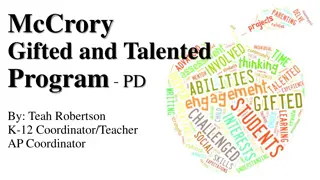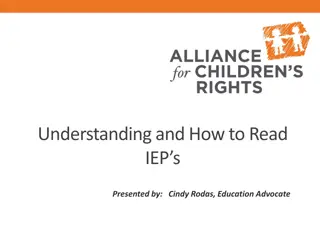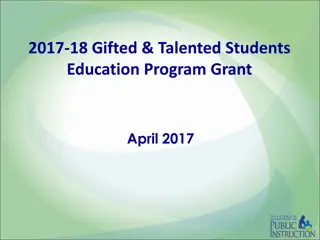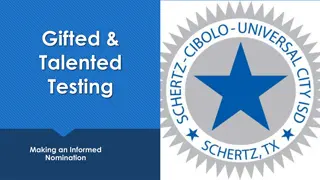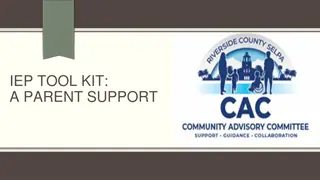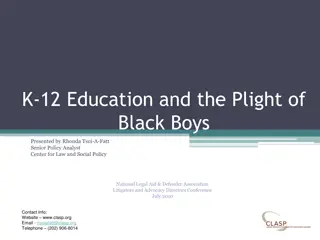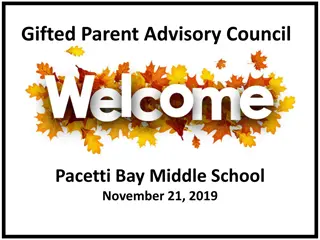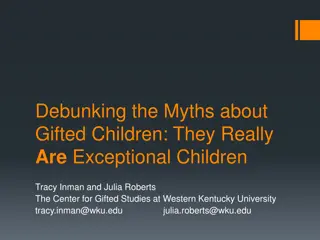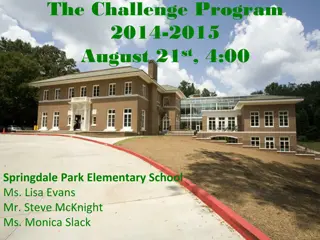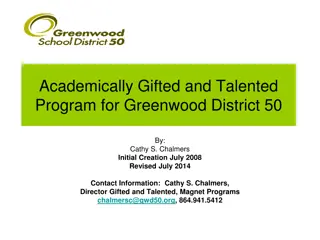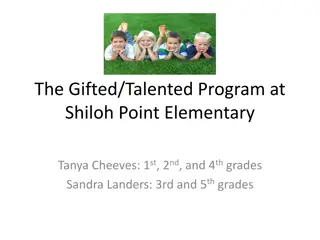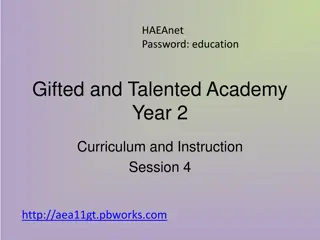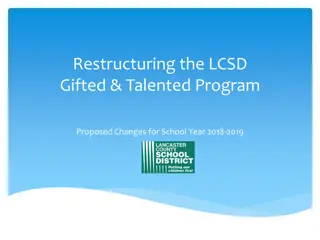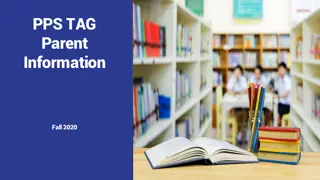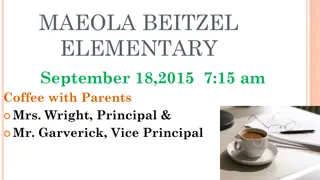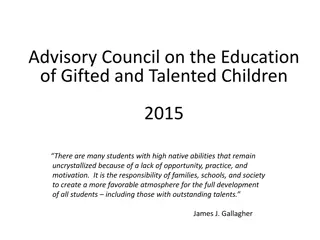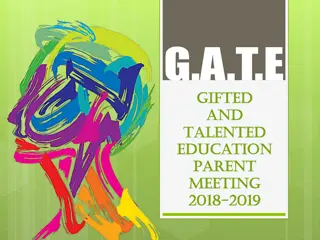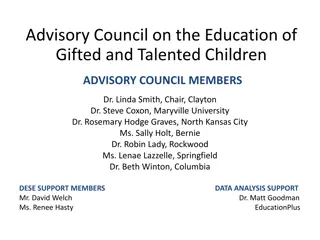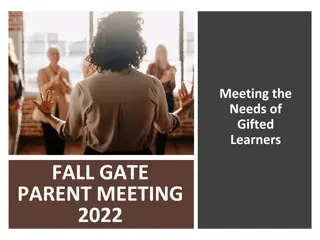Overview of Gifted Individualized Education Programs (GIEPs) and Educational Performance
Delve into the world of Special Spices: GIEPs and Gifted Programming, exploring how Present Levels of Educational Performance (PLEP) assessments inform academic goals and support services. Learn about testing data, benchmark scores, and tools like iReady for advanced learners. Discover strategies for high-achieving students at different educational levels and track progress on set goals through qualitative and quantitative analysis.
Download Presentation

Please find below an Image/Link to download the presentation.
The content on the website is provided AS IS for your information and personal use only. It may not be sold, licensed, or shared on other websites without obtaining consent from the author.If you encounter any issues during the download, it is possible that the publisher has removed the file from their server.
You are allowed to download the files provided on this website for personal or commercial use, subject to the condition that they are used lawfully. All files are the property of their respective owners.
The content on the website is provided AS IS for your information and personal use only. It may not be sold, licensed, or shared on other websites without obtaining consent from the author.
E N D
Presentation Transcript
Special Spices: GIEPs & Gifted Programming GIEPs and Gifted Programming
Reading and Understanding the GIEP (The Salt) Present Levels of Educational Performance (including testing and data) Goals Services
Present Levels of Educational Performance snapshot of the student s performance helps to inform our decisions about goals and support services needed Includes current information and historical data Some districts include the initial psychological testing results in Section A because it helps to understand the starting point of ability and achievement, particularly if we suspect that we have an underachieving gifted student
Present Levels of Educational Performance The next part of the PLEP, Section B outlines current scores from benchmark and achievement testing data. At the elementary level, this includes pre-screening tools such as iReady scores and PSSA scores. iReady can be a valuable tool for our gifted students because it offers out-of-level testing for our advanced learners. This means that even if a student has mastered 5th grade content in an area, they are able to show what they know on content in that subject area up through 8th grade.
Present Levels of Educational Performance While it is not a fool-proof system, it does help us to have more information about how high we can go in advancing the content for our highest-achieving students. When possible, include the percentile rank for PSSA scores. This gives an idea of where the student is performing based on student scores across the state, and can be used to argue subject-specific acceleration decisions.
Present Levels of Educational Performance At the high school level: Keystone PSSA PSAT/SAT, ACT and subject tests. PVAAS projection scores Class Rank and GPA
Progress on Goals An anecdotal review of student success on prior year s goals. Data can be qualitative or quantitative, and include specific experiences provided. It should also include information from a student survey or interview with the teacher reflective in nature, and projective for future goals.
Grades and Teacher Input Current snapshot of classroom grades Narrative performance information from classroom teachers Accommodations or alternative assignment data which will help to shape future goals
Other A place for everything else. sensory processing disorders, physical or mobility issues that doesn t impact their academics, but could create additional pressure or strain if not accommodated (students with a vision or fine motor issue). The GIEP is a strength-based document so accommodations like you would see in an IEP do not appear in a GIEP under SDI or support services.
Goals and Objectives Specific to student Measurable Tied to an area of strength Sometimes it s untested, and needs a narrative. (Sports, Music)
Specially Designed Instruction WHAT does the classroom teacher need to do to help the student achieve the goals and objectives? Pretesting with a threshold goal Alternative Assignments Conferencing Technology, Access to Mentor, Job Shadow? Most Difficult First Learning Contracts
Specially Designed Instruction HOW does the classroom grade the student on what he or she accomplishes? Pretesting + credit for advanced work? Summative Assignments Only?
Support Services Creative and flexible scheduling to meet the student s unique learning needs. Acceleration Compacted learning Reduced seat time Communication between case manager and classroom teacher to assess ongoing needs
Gifted Programs (The Pepper!)
Pull-out Services Often viewed as an elitist reward Rarely viewed as valuable by anyone not directly involved
Pull-out Services Like-ability students in small or grade-level groupings Often for soft-skills goals
Pull-out Services Mini-conferences and Speakers Special Projects or PBL Competitions (National History Day, Future City, Grammar Bowl, etc.) 3 Step Math


